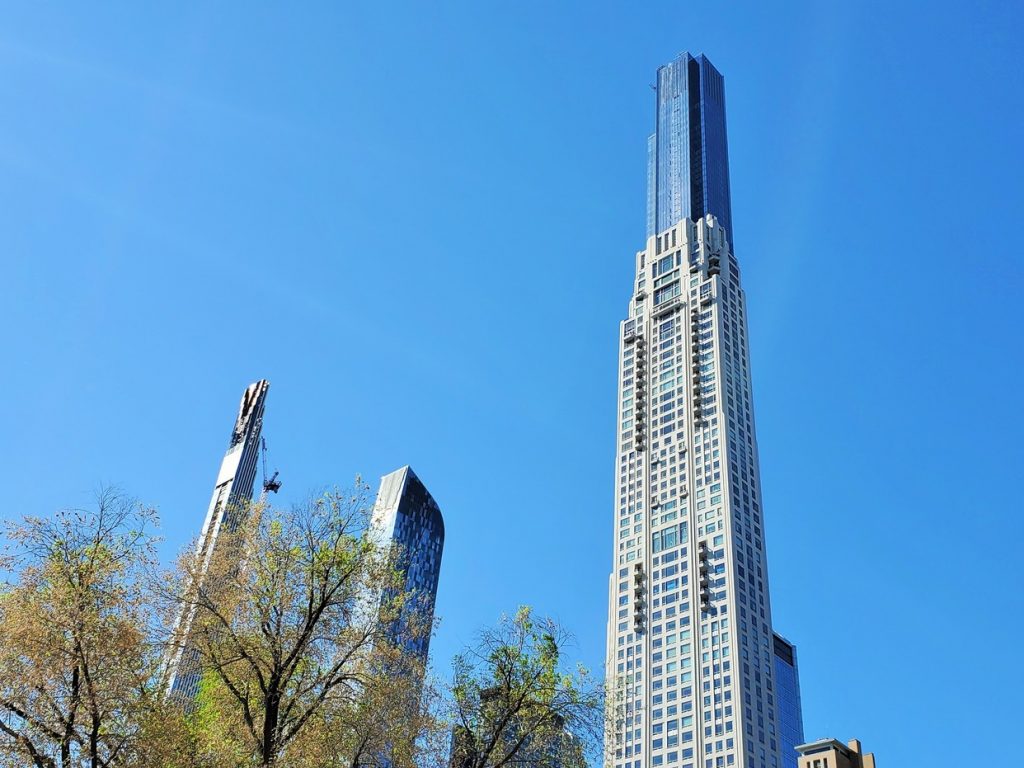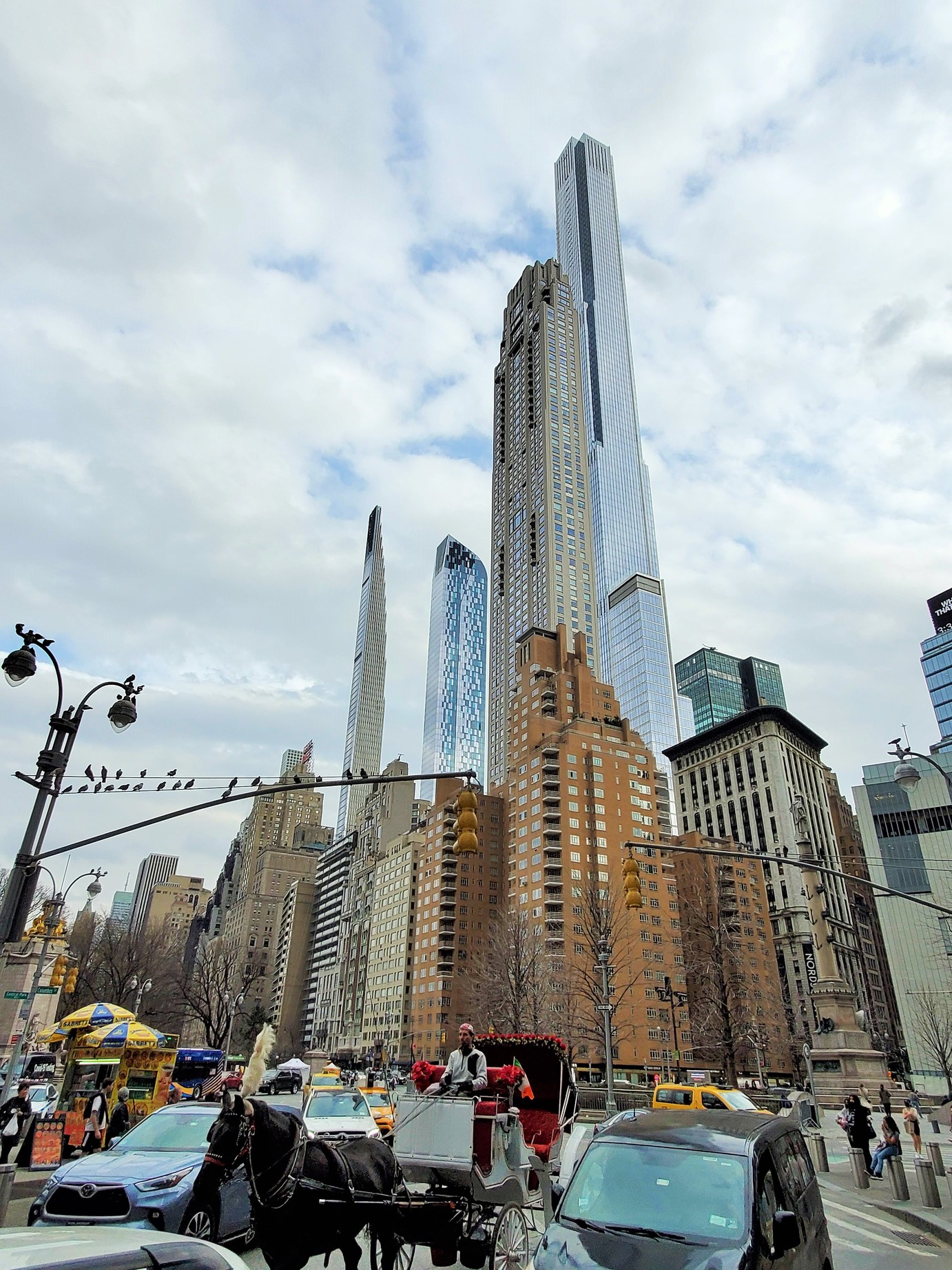BY LINCOLN ANDERSON | A month ago, Village Preservation began raising the alarm that Governor Hochul’s proposed 2023 budget included a huge gift to developers — emphasis on “huge.”
Namely, Hochul is proposing to eliminate the statewide cap on the allowable density of residential development.
Currently, this cap stands at 12 F.A.R. Short for “Floor Area Ratio,” F.A.R. is the measurement of a building’s floor area in relation to the size of the building lot. Basically, though, one doesn’t need to grasp the intricacies of the F.A.R. formula to understand that, if the cap is removed, developers would be ecstatic.
“This is a years-old law in New York State,” said Andrew Berman, executive director of Village Preservation. “There’s no place higher than 12 F.A.R. That’s why Soho/Noho and the Bowery were capped at 12 in the Soho/Noho rezoning.
“If that zoning cap is removed,” Berman warned, “I would bet that we’d be seeing them get the F.A.R. higher in many places — Long Island City, Brooklyn, the lower half of Manhattan, the sky’s the limit. De Blasio wanted it but couldn’t get it.”
Scrapping the cap would clear the way to more of those skyline-marring monstrosities known as…supertalls.
“If you look at the supertalls, they’re luxury housing,” Berman said, “housing the super-rich. Or not even housing the super-rich — because the super-rich have, like, three homes.”

As a point of reference, he noted that on 57th Street, which has become known as “Billionaires’ Row,” the base F.A.R. is just 10. But through the cunning use of “mechanical voids” and other dubious loopholes to add height, developers have been able to erect towers taller than ever before. The City Council previously made some noise about cracking down on the abuse of these bogus voids but never followed through.
“It’s a perfect example,” Berman said of 57th Street. “With just 10 F.A.R., you can build these 1,000-foot structures — and they want to lift the ceiling even higher. Some of them are over 1,500-feet tall.” If the current 12 F.A.R. max is lifted, he warned, “You’re going to see that — but on steroids.”
In short, he said, developers are salivating at the idea of removing the restriction.
“It’s a dream of the real estate industry,” Berman said, “and they’re closer than ever to doing this.”
The preservationist pointed the finger directly at the governor.
“Hochul is moving really fast on it,” he said. “In the past, the state Legislature has stopped it. We know we have some allies in this, but we want to make sure this doesn’t go into the Assembly or Senate budget.
“In her short tenure, she’s certainly been very sympathetic to the real estate industry,” he noted, disapprovingly.
The Albany budget process is currently still playing out.
“The ball is in the state Legislature’s court now. We need them to not just be not for it but to stand up against it,” he said of Hochul’s bill. “We need them to convey that it’s a nonstarter, that it’s not in their houses’ budget.
Meanwhile, state Senator Brad Hoylman on Saturday told The Village Sun that he doesn’t foresee the contentious bill going anywhere, though added that vigilance is still needed.
“I don’t think it’s going to make it into the final budget,” he said.
However, he assured, “It’s a threat to our historic districts. The alarm was in Manhattan — everywhere from the Upper West Side to the East Village and Soho.”
Technically, Hoylman noted, “It’s not a budget item” but a bill that Hochul has inserted into her budget. Governor Cuomo had previously tried the same thing and failed, he added.
The state senator said that he and two other Manhattan colleagues, Brian Kavanagh and Liz Krueger, are currently fighting to stop the F.A.R.-cap removal from being included in the final budget that will be produced after Hochul, the state Senate and the Assembly confer.
“I’m confident but I’m not going to let down my guard,” Hoylman said.
At the same time, he said, he has appreciated the transparency that Hochul has shown so far.
“I’ll tell you this, this is a governor who’s very upfront,” he said, “very collaborative. So I don’t expect the sneaky negotiations shrouded in darkness represented by the previous administration.”
A spokesperson for Assemblymember Deborah Glick said she and other assemblymembers were signing on to a letter in opposition to Hochul’s bill.


Sadly, Hochul seems completely into luxury real estate, casinos and drinks-to-go.
Apparently her husband works for a restaurant-hospitality-casino company.
Given Putin’s attack of Ukraine — not just a catastrophe for the people but complete impact for the world — one would think Hochul would be against more buildings that let oligarchs and other criminals park their money in their apartments.
The thing about rich people with money, Russian oligarchs or otherwise, is that they don’t need new construction to buy an apartment to park their money, live in, or do whatever else they want. They can just buy the apartments that already exist by offering more money than people who might live there otherwise.
So are you saying we need to “build, baby, build!” because of those pesky oligarchs?
Not really. There aren’t so many oligarchs that they have a major impact on the housing market. Per my earlier comment, I also think the market for supertalls is saturated and few would be built even if all zoning were to go away tomorrow (which, to be clear, is not what removing the state FAR cap would do). So that whole angle is a bit of a red herring. Though it is worth saying that the reason New York real estate is such a good place for oligarchs to park money is because there is (i) a constantly growing demand for it from people who want a place to live and (ii) a long history of restricting supply of new development, which protects the value of the investment and speculation in existing real estate.
What I’m really getting at is that the primary cause of the increase in housing costs is restriction of supply coupled with increase in good paying jobs. It’s the tens if not hundreds of thousands of doctors, bankers, lawyers, tech workers, entrepreneurs, etc. that bid up the price of housing. We’ve added many more of these jobs than we have housing units, so those people are driving up the cost of units that used to be affordable. Because of the lack of new development, these people are also continuing to rent in now-old buildings, like 188 Ludlow for example, that might have been considered luxury 20+ years ago but, in a healthy housing market with reasonable new construction rates, would now be naturally affordable.
There is absolutely no reason to build these supertall monstrosities. These soulless monstrosities do absolutely nothing for the communities. They cast deep shadows, and cut out the views of clouds and the sky. Their residents contribute nothing to the local communities. They usually don’t patronize local businesses and the residents get absurd tax abatements for years. I thought Hochul was an improvement over Cuomo, but she’s quickly proving I was wrong, at least when it concerns real estate interests.
LES3025, I hardly think preservationist Andrew Berman cares one iota about “restricting market-rate housing.” And does anyone really think that the Landmarks Preservation Commission — whose members are appointed by the (real estate-friendly) mayor and whose budget is being cut — will actually “stand in the way of new development”?
Fair point. As a “preservationist,” Berman cares about restricting all new housing, both subsidized and market rate. He does make an effort to appear to support “affordable” housing, though (see, for example https://twitter.com/GVSHP/status/1474025151561932811), so maybe I was being too credulous when I said he only opposed market rate. But, to be clear, he has repeatedly commented on his fights to restrict market-rate housing (https://twitter.com/search?q=from%3Agvshp%20%22market%20rate%22&src=typed_query&f=live). He cares about this very much.
LPC stands in the way of new development all the time. 250 Water St. shrunk by 25% during the LPC process (https://www.archpaper.com/2021/05/soms-shorter-250-water-street-tower-approved-for-the-south-street-seaport/). The Landmarks Law also restricts what projects get proposed in the first place. It might seem like LPC approves everything, but that is just survivorship bias because it doesn’t account for the plans that never get to LPC because they wouldn’t pass review. You can believe they should be more strict, but LPC as it currently operates is very clearly an obstacle to new development.
Why do you think 250 Water St. was downsized? It was because preservation groups, including Village Preservation, spoke out against an oversized proposal! Village Preservation, of which Andrew Berman is the executive director, is very much in favor of preserving and building affordable housing, but it is not in favor of “smokescreen” proposals (to use your term) that slap an affordable housing label on rezonings and developments that, in the end, are very unlikely to contain any actual affordable housing. Yes, you are “credulous” but not in the way you think. You have drunk the developer Kool-Aid. Or maybe you are one of those developers, salivating at the prospect of building more investment vehicles for the super-rich.
“Why do you think 250 Water St. was downsized? It was because preservation groups, including Village Preservation, spoke out against an oversized proposal!” That is exactly my point! Berman and Village Preservation opposed the project and succeeded in reducing the affordable component by 30%. Their goal is to stop both market-rate and affordable housing. That’s why I think that was their purpose in opposing lifting the FAR cap.
If the supertalls got built with the FAR cap in place, it seems to me like it isn’t doing even what its advocates say it does. Removing it wouldn’t change much since we still have the Zoning Regulation, Landmarks Preservation Commission, ULURP, etc. that stand in the way of new development.
The purported concern about more supertalls seems very overblown and the cynic in me thinks it’s a smokescreen for the politicians to restrict market-rate housing generally (and I know that’s exactly what Berman is doing). It’s not clear at all that the existing supertalls will hold their value. A unit in One57 took a 50% loss on resale last year (https://www.bloomberg.com/news/articles/2021-01-08/billionaires-row-condo-records-51-resale-loss-in-luxury-glut), and as of last summer nearly half of Billionaire’s Row was unsold (https://www.serhant.com/blog/948/nearly-half-of-billionaires-row-remains-unsold). The market seems pretty saturated, so I don’t see why any developer would be in a rush to build a bunch more.